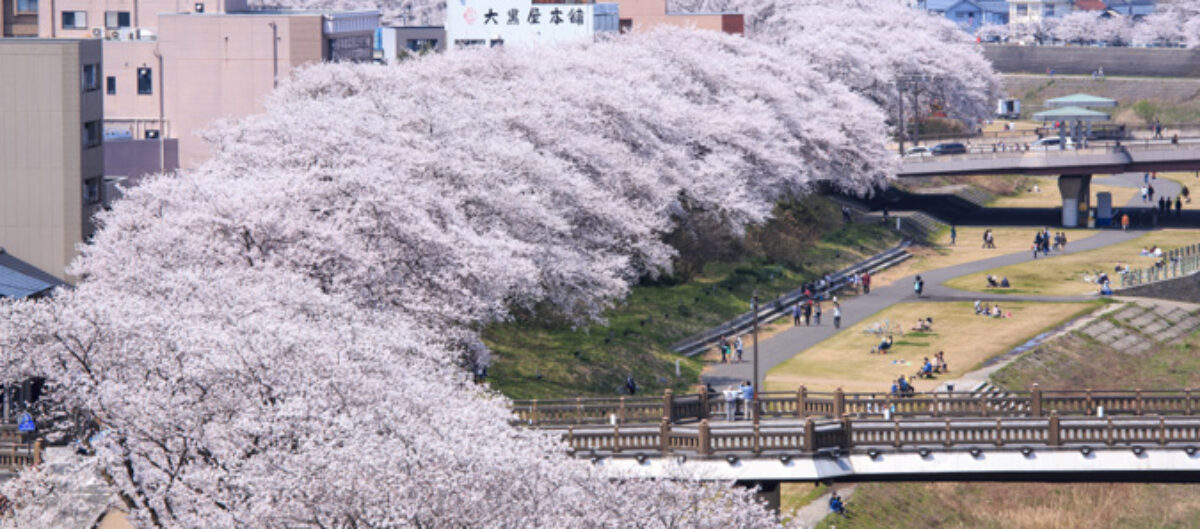
September/21/2019
People sometimes call Fukui Prefecture “the Dinosaur Kingdom” because it has the largest site in Japan for the excavation of dinosaur fossils. The Fukui Prefectural Dinosaur Museum is in the city of Katsuyama, and I went there today


It was raining and very cold. It was foggy around the museum, so it seemed likely that dinosaurs would appear somewhere.
First I went on the field station tour, which takes you to the largest dinosaur discovery site to dig for fossils. The tour lasts about two hours, and you need a reservation (which can be made on the Japanese homepage for the tour).
There were about 60 people on the tour, and we took three buses from the museum to the destination. On the bus a guide talked to us to keep us entertained. He said that we’d all be able to find fossils, but that he couldn’t promise that we’d find rare ones. This was my first time to dig fossils, so I was very excited. We went along some narrow roads in the mountains, and after 20 minutes we finally reached the destination.

First we went to the dinosaur discovery site, where there are rock layers that are 120 million years old. I’d heard that this site is the main place for dinosaur fossil excavations in Japan and that five new dinosaur species (Fukuiraptor, Fukuivenator, Fukuititan, Fukuisaurus and Koshisaurus.) had been found there, and now I pondered these facts. I also learned that both the five discovered species and the site had been designated as national natural treasures, the only time this has ever happened for dinosaur fossils.
Next to the place where those earlier discoveries were made, excavations for fossils are still underway. About 4,200 fossil bones were found at the site this fiscal year.


Next we went into a building and saw an exhibition of fossils. I was especially struck by some fossilized footprints that were shaped like maple leaves.

Finally we excavated some fossils. We went to a venue where there were a lot of stones on the ground. These had been brought from the excavation site, so they were the same kinds of stones that researchers look at.
Before the excavation a staff member explained how to do it. He said that stones containing fossils were gray or black, and that we had to find those. He also said that a person who had been on the tour yesterday had found a fossil of a dinosaur’s tooth.
I put on some goggles and took a hammer in my right hand and a big spike in my left hand. Then I started excavating. I was determined that I’d find a rare fossil!
I searched among the stones carefully, and I picked up some of them and struck them with the hammer. Soon I found a stone that glittered, and I thought that it might be a rare fossil. I showed it to the staff member, and he explained that it was a fossil of a plant. I was a little disappointed. I continued working. The people around me were very serious about excavating fossils too. Eventually I found a stone whose shape was unique. The staff member said that it was the fossil of a shell. On its surface I saw the kind of stripe pattern that most shells have.

Eventually the time was up. I hadn’t found any rare fossils, but I’d found some ordinary ones. We were each allowed to take away one stone, and I took the shell fossil home. It’s 120 million years old. When the creature in this shell lived, dinosaurs walked the earth, and of course the human species didn’t exist yet, nor did the Japanese Islands. The stone makes me think of a lot of things.
The tour guides there speak Japanese and the exhibition placards are in Japanese, so it might be difficult for English speakers to go on this tour. However, I hope this entry has given you an idea of what the tour was like.
Next I’m going to write about what it was like inside the museum.(Fukui Prefectural Dinosaur Museum: one of the world’s top three dinosaur museums.)
(References)
「楽しい日本の恐竜案内」(監修:石垣忍、林 昭次)(執筆:土屋 健)(平凡社)
福井新聞(2019年10月5日号)
